1 Module 1: Society, Culture and the Sociological Imagination

Learning Objectives
- Distinguish between the concepts of society and culture and discuss the relationship between them
- Describe the different levels of analysis in sociology: micro-level sociology, meso-level sociology, macro-level sociology, and global-level sociology
- Elaborate the meaning of the sociological imagination
- Explain why the relationship between the individual and society is a challenging problem within sociology
- Compare ways of understanding the evolution of types of societies
- Describe the difference between pre-industrial, industrial, post-industrial and post-natural societies
- Discuss how a societies relationship to the environment is related to societal development
- Explain why it is worthwhile to study sociology.
- Identify ways sociology is applied in the real world.
1.0 Introduction to Society, Culture and Sociology
A society is a group of people whose members interact, reside in a definable area, and share a culture. In practical, everyday terms, societies consist of various types of institutional constraint and coordination exercised over our choices and actions. The type of society we live in determines the nature of these types of constraint and coordination. The nature of our social institutions, the type of work we do, the way we think about ourselves and the structures of power and social inequality that order our life chances are all products of the type of society we live in and thus vary globally and historically.
A culture includes the group’s shared practices, values, beliefs, norms, and artifacts. Humans are social creatures. Since the dawn of Homo sapiens, nearly 200,000 years ago, people have grouped together into communities in order to survive. Living together, people developed forms of cooperation which created the common habits, behaviours, and ways of life known as culture — from specific methods of childrearing to preferred techniques for obtaining food. Peter Berger (b. 1929) argued that this is the result of a fundamental human predicament (1967). Unlike other animals, humans lack the biological programming to live on their own. They require an extended period of dependency in order to survive in the environment. The creation of culture makes this possible by providing a protective shield against the harsh impositions of nature. Culture provides the ongoing stability that enables human existence. This means, however, that the human environment is not nature per se but culture itself.
Over the history of humanity, this has lead to an incredible diversity in how humans have imagined and lived life on Earth, the sum total of which Wade Davis (b. 1953) has called the ethnosphere. The ethnosphere is the entirety of all cultures’ “ways of thinking, ways of being, and ways of orienting oneself on the Earth” (Davis, 2007). It is our collective cultural heritage as a species. A single culture, as the sphere of meanings shared by a single social group, is the means by which that group makes sense of the world and of each other. But there are many cultures and many ways of making sense of the world. Through a multiplicity of cultural inventions, human societies have adapted to the environmental and biological conditions of human existence in many different ways.
This raises the distinction between the terms “culture” and “society” and how we conceptualize the relationship between them. In everyday conversation, people rarely distinguish between these terms, but they have slightly different meanings, and the distinction is important to how we examine them. As indicated above, a culture represents the beliefs, practices, and material artifacts of a group, while a society represents the social structures, processes, and organization of the people who share those beliefs, practices, and material artifacts. Neither society nor culture could exist without the other, but we can separate them analytically.
Sociology is the systematic study of society and social interaction. The word “sociology” is derived from the Latin word socius (companion) and the Greek word logos (speech or reason), which together mean “reasoned speech or discourse about companionship”. How can the experience of companionship or togetherness be put into words or explained? While this is a starting point for the discipline, sociology is actually much more complex. It uses many different theories and methods to study a wide range of subject matter, and applies these studies to the real world. A selection of these different theories and methods and their application to various social phenomena will be examined in subsequent modules.
Sociologists study all aspects and levels of society and the relationship of society and culture. One sociologist might analyze video of people from different societies as they carry on everyday conversations to study the rules of polite conversation from different world cultures. Another sociologist might interview a representative sample of people to see how email and instant messaging have changed the way organizations are run. Yet another sociologist might study how migration determined the way in which language spread and changed over time. A fourth sociologist might study the history of international agencies like the United Nations or the International Monetary Fund to examine how the globe became divided into a First World and a Third World after the end of the colonial era.
These examples illustrate the ways in which society and culture can be studied at different levels of analysis, from the detailed study of face-to-face interactions to the examination of large-scale historical processes affecting entire civilizations. It is common to divide these levels of analysis into different gradations based on the scale of interaction involved. In general, sociologists break the study of society down into four separate levels of analysis: micro, meso, macro, and global.
The study of cultural rules of politeness in conversation is an example of micro-level sociology. At the micro-level of analysis, the focus is on the social dynamics of intimate, face-to-face interactions. Research is conducted with a specific set of individuals such as conversational partners, family members, work associates, or friendship groups. In the conversation study example, sociologists might try to determine how people from different cultures interpret each others’ behaviour to see how different rules of politeness lead to misunderstandings. If the same misunderstandings occur consistently in a number of different interactions, the sociologists may be able to propose some generalizations about rules of politeness that would be helpful in reducing tensions in mixed-group dynamics (e.g., during staff meetings or international negotiations). Other examples of micro-level research include seeing how informal networks become a key source of support and advancement in formal bureaucracies, or how loyalty to criminal gangs is established. The micro and meso levels of sociological analysis are explored in greater detail within Sociology 112.
Macro-level sociology focuses on the properties of large-scale, society-wide social interactions that extend beyond the immediate milieu of individual interactions: the dynamics of institutions, class structures, gender relations, or whole populations. The example above of the influence of migration on changing patterns of language usage is a macro-level phenomenon because it refers to structures or processes of social interaction that occur outside or beyond the intimate circle of individual social acquaintances. These include the economic, political, and other circumstances that lead to migration; the educational, media, and other communication structures that help or hinder the spread of speech patterns; the class, racial, or ethnic divisions that create different slangs or cultures of language use; the relative isolation or integration of different communities within a population; and so on. Other examples of macro-level research include examining why women are far less likely than men to reach positions of power in society, or why fundamentalist Christian religious movements play a more prominent role in American politics than they do in Canadian politics. In each case, the site of the analysis shifts away from the nuances and detail of micro-level interpersonal life to the broader, macro-level systematic patterns that structure social change and social cohesion in society.
In global-level sociology, the focus is on structures and processes that extend beyond the boundaries of states or specific societies. As Ulrich Beck (2000) has pointed out, in many respects we no longer “live and act in the self-enclosed spaces of national states and their respective national societies.” Issues of climate change, the transmission of pathogens, the introduction of new technologies, the investment and disinvestment of capital, the images of popular culture, or the tensions of cross-cultural conflict, etc. increasingly involve our daily life in the affairs of the entire globe, by-passing traditional borders and, to some degree, distance itself. The example above of the way in which the world became divided into wealthy First World and impoverished Third World societies reflects social processes — the formation of international institutions such as the United Nations, the International Monetary Fund, and non-governmental organizations, etc. — which are global in scale and global in their effects. With the boom and bust of petroleum or other export commodity economies, it is clear to someone living in Fort McMurray, Alberta, that their daily life is affected not only by their intimate relationships with the people around them, nor only by provincial and national based corporations and policies, etc., but by global markets that determine the price of oil and the global flows of capital investment. The context of these processes has to be examined at a global scale of analysis. The macro and global levels of sociological analysis are a primary focus of Sociology 111 and will be examined in greater depth in subsequent modules in this course.
The relationship, between the micro, meso, macro, and global remains one of the key conceptual problems confronting sociology. What is the relationship between an individual’s life and social life? The early German sociologist Georg Simmel pointed out that macro-level processes are in fact nothing more than the sum of all the unique interactions between specific individuals at any one time (1908/1971), yet they have properties of their own which would be missed if sociologists only focused on the interactions of specific individuals. Émile Durkheim’s classic study of suicide (1897/1951) is a case in point. While suicide is one of the most personal, individual, and intimate acts imaginable, Durkheim demonstrated that rates of suicide differed between religious communities — Protestants, Catholics, and Jews — in a way that could not be explained by the individual factors involved in each specific case. The different rates of suicide had to be explained by macro-level variables associated with the different religious beliefs and practices of the faith communities; more specifically, the different degrees of social integration of these communities. We will return to this example in more detail later. On the other hand, macro-level phenomena like class structures, institutional organizations, legal systems, gender stereotypes, population growth, and urban ways of life provide the shared context for everyday life but do not explain its specific nuances and micro-variations very well. Macro-level structures constrain the daily interactions of the intimate circles in which we move, but they are also filtered through localized perceptions and “lived” in a myriad of inventive and unpredictable ways.
1.1 The Sociological Imagination
Although the scale of sociological studies and the methods of carrying them out are different, the sociologists involved in them all have something in common. Each of them looks at society using what pioneer sociologist C. Wright Mills (1916-1962) called the sociological imagination, sometimes also referred to as the “sociological lens” or “sociological perspective.” In a sense, this was Mills’ way of addressing the dilemmas of the macro/micro divide in sociology. Mills defined sociological imagination as how individuals understand their own and others’ lives in relation to history and social structure (1959/2000). It is the capacity to see an individual’s private troubles in the context of the broader social processes that structure them. This enables the sociologist to examine what Mills called “personal troubles of milieu” as “public issues of social structure,” and vice versa.
Mills reasoned that private troubles like being overweight, being unemployed, having marital difficulties, or feeling purposeless or depressed can be purely personal in nature. It is possible for them to be addressed and understood in terms of personal, psychological, or moral attributes — either one’s own or those of the people in one’s immediate milieu. In an individualistic society like our own, this is in fact the most likely way that people will regard the issues they confront: “I have an addictive personality;” “I can’t get a break in the job market;” “My husband is unsupportive,” etc. However, if private troubles are widely shared with others, they indicate that there is a common social problem that has its source in the way social life is structured. At this level, the issues are not adequately understood as simply private troubles. They are best addressed as public issues that require a collective response to resolve.
Obesity, for example, has been increasingly recognized as a growing problem for both children and adults in North America. Michael Pollan cites statistics that three out of five Americans are overweight and one out of five is obese (2006). In Canada in 2012, just under one in five adults (18.4%) were obese, up from 16% of men and 14.5% of women in 2003 (Statistics Canada, 2013). Obesity is therefore not simply a private concern related to the medical issues, dietary practices, or exercise habits of specific individuals. It is a widely shared social issue that puts people at risk for chronic diseases like hypertension, diabetes, and cardiovascular disease. It also creates significant social costs for the medical system.
Pollan argues that obesity is in part a product of the increasingly sedentary and stressful lifestyle of modern, capitalist society. More importantly, however, it is a product of the industrialization of the food chain, which since the 1970s has produced increasingly cheap and abundant food with significantly more calories due to processing. Additives like corn syrup, which are much cheaper and therefore more profitable to produce than natural sugars, led to the trend of super-sized fast foods and soft drinks in the 1980s. As Pollan argues, trying to find a processed food in the supermarket without a cheap, calorie-rich, corn-based additive is a challenge. The sociological imagination in this example is the capacity to see the private troubles and attitudes associated with being overweight as an issue of how the industrialization of the food chain has altered the human/environment relationship — in particular, with respect to the types of food we eat and the way we eat them.
By looking at individuals and societies and how they interact through this lens, sociologists are able to examine what influences behaviour, attitudes, society and culture. By applying systematic and scientific methods to this process, they try to do so without letting their own biases and preconceived ideas influence their conclusions.
1.1.1 Studying Patterns: How Sociologists View Society
All sociologists are interested in the experiences of individuals and how those experiences are shaped by interactions with social groups and society as a whole. To a sociologist, the personal decisions an individual makes do not exist in a vacuum. Cultural patterns and social forces put pressure on people to select one choice over another. Sociologists try to identify these general patterns by examining the behaviour of large groups of people living in the same society and experiencing the same societal pressures. When general patterns persist through time and become habitual or routinized at micro-levels of interaction, or institutionalized at macro or global levels of interaction, they are referred to as social structures.
As we noted above, understanding the relationship between the individual and society is one of the most difficult sociological problems. Partly this is because of the reified way these two terms are used in everyday speech. Reification refers to the way in which abstract concepts, complex processes, or mutable social relationships come to be thought of as “things.” A prime example of reification is when people say that “society” caused an individual to do something, or to turn out in a particular way. In writing essays, first-year sociology students sometimes refer to “society” as a cause of social behaviour or as an entity with independent agency. On the other hand, the “individual” is a being that seems solid, tangible, and independent of anything going on outside of the skin sack that contains its essence. This conventional distinction between society and the individual is a product of reification, as both society and the individual appear as independent objects. A concept of “the individual” and a concept of “society” have been given the status of real, substantial, independent objects. As we will see in the modules to come, society and the individual are neither objects, nor are they independent of one another. An “individual” is inconceivable without the relationships to others that define their internal, subjective life and their external, socially-defined roles.
One problem for sociologists is that these concepts of the individual and society, and the relationship between them, are thought of in terms established by a very common moral framework in modern democratic societies — namely, that of individual responsibility and individual choice. The individual is morally responsible for their behaviours and decisions. Often in this framework, any suggestion that an individual’s behaviour needs to be understood in terms of that person’s social context is dismissed as “letting the individual off” for taking personal responsibility for their actions. Talking about society is akin to being morally soft or lenient.
Sociology, as a social science, remains neutral on these types of moral questions. For sociologists, the conceptualization of the individual and society is much more complex than the moral framework suggests and needs to be examined through evidence-based, rather than morality-based, research. The sociological problem is to be able to see the individual as a thoroughly social being and, yet, as a being who has agency and free choice. Individuals are beings who do take on individual responsibilities in their everyday social roles, and risk social consequences when they fail to live up to them. However, the manner in which individuals take on responsibilities, and sometimes the compulsion to do so, are socially defined. The sociological problem is to be able to see society as: a dimension of experience characterized by regular and predictable patterns of behaviour that exist independently of any specific individual’s desires or self-understanding. At the same time, a society is nothing but the ongoing social relationships and activities of specific individuals.
A key basis of the sociological perspective is the concept that the individual and society are inseparable. It is impossible to study one without the other. German sociologist Norbert Elias (1887-1990) called the process of simultaneously analyzing the behaviour of individuals and the society that shapes that behaviour figuration. He described it through a metaphor of dancing. There can be no dance without the dancers, but there can be no dancers without the dance. Without the dancers, a dance is just an idea about motions in a choreographer’s head. Without a dance, there is just a group of people moving around a floor. Similarly, there is no society without the individuals that make it up, and there are also no individuals who are not affected by the society in which they live (Elias, 1978).
1.2 Understanding The Evolution of Types of Societies
The founder of sociology, August Comte (1798–1857), provided the first sociological theory of the evolution of human societies. His best known sociological theory was the law of three stages, which held that all human societies and all forms of human knowledge evolve through three distinct stages from primitive to advanced: the theological, the metaphysical, and the positive. The key variable in defining these stages was the way a people conceptualized causation or how they understood their place in the world.
In the theological stage, humans explain causes in terms of the will of anthropocentric gods (the gods cause things to happen). In the metaphysical stage, humans explain causes in terms of abstract, “speculative” ideas like nature, natural rights, social contracts, or “self-evident” truths. This was the basis of Comte’s critique of the Enlightenment philosophers whose ideas about natural rights and freedoms had led to the French Revolution but also to the chaos of its aftermath. In his view, the “negative” or metaphysical knowledge of the philosophers was based on dogmatic ideas that could not be reconciled when they were in contradiction. This lead to inevitable conflict and moral anarchy. Finally, in the positive stage, humans explain causes in terms of positivist, scientific observations and laws (i.e., “positive” knowledge based on propositions limited to what can be empirically observed). Comte believed that this would be the final stage of human social evolution because positivist science could empirically determine how society should be organized. Science could reconcile the division between political factions of order and progress by eliminating the basis for moral and intellectual anarchy. The application of positive philosophy would lead to the unification of society and of the sciences (Comte, 1830/1975).
Karl Marx offered another model for understanding the evolution of types of society. Marx argued that the evolution of societies from primitive to advanced was not a product of the way people thought, as Comte proposed, but of the power struggles in each epoch between different social classes over control of property. The key variable in his analysis was the different modes of production or “material bases” that characterized different forms of society: from hunting and gathering, to agriculture, to industrial production. This historical materialist approach to understanding society explains both social change and the development of human ideas in terms of underlying changes in the mode of production. In other words the type of society and its level of development is determined principally by how a people produces the material goods needed to meet its needs. Their world view, including the concepts of causality described by Comte, followed from the way of thinking involved in the society’s mode of production.
On this basis, Marx categorized the historical types of society into primitive communism, agrarian/slave societies, feudalism, and capitalism. Primitive communists, for example, are hunter gatherers like the Haida whose social institutions and worldview develop in sync with their hunting and gathering relationship to the environment and its resources. They are defined by their hunter-gatherer mode of production.
Marx went on to argue that the historical transformations from one type of society to the next are generated by the society’s capacity to generate economic surpluses and the conflicts and tensions that develop when one class monopolizes economic power or property: land owners over agricultural workers, slave owners over slaves, feudal lords over serfs, or capitalists over labourers. These class dynamics are inherently unstable and eventually lead to revolutionary transformations from one mode of production to the next.
To simplify Comte’s and Marx’s schemas, we might examine the way different types of society are structured around their relationship to nature. Sociologist Gerhard Lenski (1924-2015) defined societies in terms of their technological sophistication. With each advance in technology the relationship between humans and nature is altered. Societies with rudimentary technology are at the mercy of the fluctuations of their environment, while societies with industrial technology have more control over their environment, and thus develop different cultural and social features. On the other hand, societies with rudimentary technology make relatively little impact on their environment, while industrial societies transform it radically. The changes in the relationship between humans and their environment in fact goes beyond technology to encompass all aspects of social life, including its mental life (Comte) and material life (Marx). Distinctions based on the changing nature of this relationship enable sociologists to describe societies along a spectrum: from the foraging societies that characterized the first 90,000 years of human existence to the contemporary postnatural, anthropocene societies in which human activity has made a substantial impact on the global ecosystem.
1.2.1 Preindustrial Societies
Before the Industrial Revolution and the widespread use of machines, societies were small, rural, and dependent largely on local resources. Economic production was limited to the amount of labour a human being could provide, and there were few specialized occupations. Production was (for the most part) for immediate consumption, although evidence of trade between groups also goes back to the earliest archaeological records. The very first occupation was that of hunter-gatherer.
Hunter-Gatherer Societies
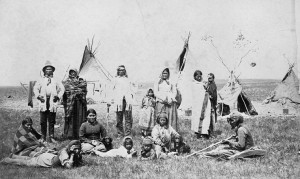
Of the various types of preindustrial societies, Hunter-gatherer societies demonstrate the strongest dependence on the environment. As the basic structure of all human society until about 10,000–12,000 years ago, these groups were based around kinship or tribal affiliations. Hunter-gatherers relied on their surroundings for survival — they hunted wild animals and foraged for uncultivated plants for food. They survived on what nature provided and immediately consumed what they obtained. They produced no surpluses. When resources became scarce, the group moved to a new area to find sustenance, meaning they were nomadic. The plains Indians of North America, moved frequently to follow their main source of food. Some groups, like the Haida, lived off of abundant, non-depleting resources like fish, which enabled them to establish permanent villages where they could dwell for long periods of the year before dispersing to summer camps.
Most of the caloric intake of hunters and gatherers came from foraging for edible plants, fruits, nuts, berries, and roots. The largely meat-based diet of the Inuit is a notable exception. Richard Lee (1978) estimated that approximately 65% of the hunter-gatherer diet came from plant sources, which had implications for the gender egalitarianism of these societies. With the earliest economic division of labour being between male hunters and women gatherers, the fact that women accounted for the largest portion of the food consumed by the community ensured the importance of their status within the group. On the other hand, early reports of missionaries among the Algonquins of the north shore of Lake Superior observed women with their noses cut off and small parts of their scalp removed as punishment for adultery, suggesting that (at least among some groups) female subordination was common. Male Algonquins often had seven or eight wives (Kenton, 1954).
As a result of their unique relationship and dependence on the environment for sustenance, the ideal type or model that characterized hunter-gatherer societies includes several common features (Diamond, 1974):
- The distribution of economic surplus is organized on a communalistic, shared basis in which there is little private property, work is cooperative, and gift giving is extensive. The use of resources was governed by the practice of usufruct, the distribution of resources according to need (Bookchin, 1982).
- Power is dispersed either shared equally within the community, or shifting between individual members based on individual skills and talents.
- Social control over the members of society is exercised through shared customs and sentiment rather than through the development of formal law or institutions of law enforcement.
- Society is organized on the basis of kinship and kinship ties so there are few, if any, social functions or activities separate from family life.
- There is little separation between the spheres of intimate private life and public life. Everything is a matter of collective concern.
- The life of the community is all “personal” and emotionally charged. There is little division of labour so there is no social isolation.
- Art, story telling, ethics, religious ritual and spirituality are all fused together in daily life and experience. They provide a common means of expressing imagination, inspiration, anxiety, need and purpose.
One interesting aspect of hunter-gatherer societies that runs counter to modern prejudices about “primitive” society, is how they developed mechanisms to prevent their evolution into more “advanced” sedentary, agricultural types of society. For example, in the “headman” structure, the authority of the headman or “titular chief” rests entirely on the ongoing support and confidence of community members rather than permanent institutional structures. This is a mechanism that actively wards off the formation of permanent institutionalized power (Clastres, 1987). The headman’s main role is as a diplomatic peacemaker and dispute settler, and he held sway only so long as he maintained the confidence of the tribe. Beyond a headman’s personal prestige, fairness in judgement and verbal ability, there was no social apparatus to enable a permanent institutional power or force to emerge.
Similarly the Northwest Pacific practice of the potlatch, in which goods, food, and other material wealth were regularly given away to neighboring bands, provided a means of redistributing wealth and preventing permanent inequality from developing. Evidence also shows that even when hunter-gatherers lived in close proximity with agriculturalists they were not motivated to adopt the agricultural mode of production because the diet of early agricultural societies was significantly poorer in nutrition (Stavrianos, 1990; Diamond, 1999). Recent evidence from archaeological sites in the British Isles suggests for example that early British hunter-gatherers traded for wheat with continental agriculturalists 2,000 years before agricultural economies were adopted in ancient Britain (Smith et. al., 2015; Larson, 2015). They had close contact with agriculturalists but were not inclined to adopt their sedentary societal forms, presumably because there was nothing appealing about them.
These societies were common until several hundred years ago, but today only a few hundred remain in existence, such as indigenous Australian tribes sometimes referred to as “aborigines,” or the Bambuti, a group of pygmy hunter-gatherers residing in the Democratic Republic of Congo. Still, in 2014, members of the Amazonian Mashco-Piro clan emerged out of their voluntary isolation at the border of Peru and Brasil to make “first contact” with the Brazilian government’s Indigenous people’s authority (Funai) in order to seek protection from suspected drug-traffickers (Collins, 2014). Hunter-gatherer groups largely disappeared under the impact of colonization and European diseases, but it is estimated that another 75 uncontacted tribes still inhabit the Amazonian rainforest.
Horticultural and Pastoral Societies

Around 10,200 BCE, another type of society developed in ancient Anatolia, (now part of Turkey), based on the newly developed capacity for people to grow and cultivate plants. Previously, the depletion of a region’s crops or water supply forced hunter-gatherer societies to relocate in search of food sources. Horticultural societies formed in areas where rainfall and other conditions provided fertile soils to grow stable crops with simple hand tools. Their increasing degree of control over nature decreased their dependence on shifting environmental conditions for survival. They no longer had to abandon their location to follow resources and were able to find permanent settlements. The new horticultural technology created more stability and dependability, produced more material goods and provided the basis for the first revolution in human survival: the neolithic revolution.
Changing conditions and adaptations also led some societies to rely on the domestication of animals where circumstances permitted. Roughly 8,000 BCE, human societies began to recognize their ability to tame and breed animals. Pastoral societies rely on the domestication of animals as a resource for survival. Unlike earlier hunter-gatherers who depended entirely on existing resources to stay alive, pastoral groups were able to breed livestock for food, clothing, and transportation, creating a surplus of goods. Herding, or pastoral, societies remained nomadic because they were forced to follow their animals to fresh feeding grounds.
With the emergence of horticultural and pastoral societies during the neolithic revolution, stable agricultural surpluses began to be generated, population densities increased, specialized occupations developed, and societies commenced sustained trading with other local groups. Feuding and warfare also grew with the accumulation of wealth. One of the key inventions of the neolithic revolution therefore was structured, social inequality: the development of a class structure based on the appropriation of surpluses. A social class can be defined as a group that has a distinct relationship to the means of production. In neolithic societies, based on horticulture or animal husbandry as their means of production, control of land or livestock became the first form of private property that enabled one relatively small group to take the surpluses while another much larger group produced them. For the first time in history, societies were divided between producing classes and owning classes. Moreover, as control of land was the source of power in neolithic societies, ways of organizing and defending it became a more central preoccupation. The development of permanent administrative and military structures, taxation, as well as the formation of specialized priestly classes to spiritually unite society originated on the basis of the horticultural and pastoral relationship to nature.
Agricultural Societies
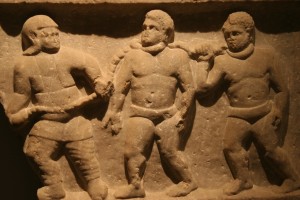
While pastoral and horticultural societies used small, temporary tools such as digging sticks or hoes, agricultural societies relied on permanent tools for survival. Around 3,000 BCE, an explosion of new technology known as the Agricultural Revolution made farming possible — and profitable. Farmers learned to rotate the types of crops grown on their fields and to reuse waste products such as fertilizer, which led to better harvests and bigger surpluses of food. New tools for digging and harvesting were made of metal, making them more effective and longer lasting. Human settlements grew into towns and cities, and particularly bountiful regions became centres of trade and commerce.
This era in which some classes of people had the time and comfort to engage in more contemplative and thoughtful activities, such as music, poetry, and philosophy, became referred to as the “dawn of civilization” by some because of the development of leisure and arts. Craftspeople were able to support themselves through the production of creative, decorative, or thought-provoking aesthetic objects and writings.
As agricultural techniques made the production of surpluses possible, social classes and power structures became further entrenched. Kinship ties became secondary to other forms of social allegiance and power. Those with the power to appropriate the surpluses were able to dominate the society on a wider scale than ever before. Classes of nobility and religious elites developed. As cities expanded, ownership and protection of resources became an ever pressing concern and the militarization of society became more prominent. Difference in social standing between men and women, already initiated in neolithic societies, became more pronounced and institutionalized. Slavery — the ownership and control of humans as property — was also institutionalized as a large scale source of labour. In the agricultural empires of Greece and Rome, slavery was the dominant form of class exploitation. However, as slaves were largely acquired through military acquisition, ancient slavery as an institution was inherently unstable and inefficient.
Feudal Societies
In Europe, the 9th century gave rise to feudal societies. Feudal societies were still agriculturally based but organized according to a strict hierarchical system of power founded on land ownership, military protection, and duties or mutual obligations between the different classes. Feudalism is usually used in a restricted sense by historians to describe the societies of post-Roman Europe, from roughly the 9th to the 15th centuries (the “middle ages”), although these societies bare striking resemblance to the hierarchical, agricultural-based societies of Japan, China, and pre-contact America (e.g., Aztec, Inca) of the same period.
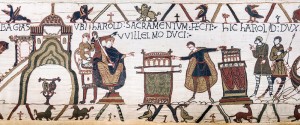
In Europe the class system of feudalism was organized around the parceling out of manors or estates by the aristocracy to vassals and knights in return for their military service. The nobility, known as lords, rewarded knights or vassals by granting them pieces of land. In return for the resources that the land provided, vassals promised to fight for their lords. These individual pieces of land, known as fiefdoms, were cultivated by the lower class of serfs. Serfs were not slaves, in that they were at least nominally free men and women, but they produced agricultural surpluses for lords primarily through forced agricultural service. In return for maintaining and working the land, serfs were guaranteed a place to live and military protection from outside enemies. They were able to produce food and goods for their own consumption on private land allotments, or on common allotments shared by the community. Power in feudal society was handed down through family lines, with serf families serving lords for generations and generations.
In later forms of feudalism, the forced labour of the serfs was gradually replaced by a system of rents and taxation. Serfs worked their own plots of land but gave their lords a portion of what they produced. Gradually payment in the form of goods and agricultural surplus was replaced by payment in the form of money. This prompted the development of markets in which the exchange of goods through bartering was replaced by the exchange of goods for money. This was the origin of the money economy. In bartering, the buyer and the seller have to need each other’s goods. In a market economy, goods are exchanged into a common medium of value — money — which can then be exchanged for goods of any nature. Markets therefore enabled goods and services to be bought and sold on a much larger scale and in a much more systematic and efficient way. Money also enabled land to be bought and sold instead of handed down through hereditary right. Money could be accumulated and financial debts could be incurred.
Ultimately, the social and economic system of feudalism was surpassed by the rise of capitalism and the technological advances of the industrial era, because money allowed economic transactions to be conceived and conducted in an entirely new way. In particular, the demise of feudalism was initiated by the increasing need to intensify labour and improve productivity as markets became more competitive and the economy less dependent on agriculture.
1.2.2 Industrial Societies

In the 18th century, Europe experienced a dramatic rise in technological invention, ushering in an era known as the Industrial Revolution. What made this period remarkable was the number of new inventions that influenced people’s daily lives. Within a generation, tasks that had until this point required months of labour became achievable in a matter of days. Before the Industrial Revolution, work was largely person- or animal-based, relying on human workers or horses to power mills and drive pumps. In 1782, James Watt and Matthew Boulton created a steam engine that could do the work of 12 horses by itself.
Steam power began appearing everywhere. Instead of paying artisans to painstakingly spin wool and weave it into cloth, people turned to textile mills that produced fabric quickly at a better price, and often with better quality. Rather than planting and harvesting fields by hand, farmers were able to purchase mechanical seeders and threshing machines that caused agricultural productivity to soar. Products such as paper and glass became available to the average person, and the quality and accessibility of education and health care soared. Gas lights allowed increased visibility in the dark, and towns and cities developed a nightlife.
One of the results of increased wealth, productivity, and technology was the rise of urban centres. Serfs and peasants, expelled from their ancestral lands, flocked to the cities in search of factory jobs, and the populations of cities became increasingly diverse. The new generation became less preoccupied with maintaining family land and traditions, and more focused on survival. Some were successful in acquiring wealth and achieving upward mobility for themselves and their family. Others lived in devastating poverty and squalor. Whereas the class system of feudalism had been rigid, and resources for all but the highest nobility and clergy were scarce, under capitalism social mobility (both upward and downward) became possible.
It was during the 18th and 19th centuries of the Industrial Revolution that sociology was born. Life was changing quickly and the long-established traditions of the agricultural eras did not apply to life in the larger cities. Masses of people were moving to new environments and often found themselves faced with horrendous conditions of filth, overcrowding, and poverty. Social science emerged in response to the unprecedented scale of the social problems of modern society. The relationships between the rise of modern industrial society and the development of sociology is explored in greater detail in Module Two.
It was during this time that power moved from the hands of the aristocracy and “old money” to the new class of rising bourgeoisie who were able to amass fortunes in their lifetimes. In Canada, a new cadre of financiers and industrialists like Donald Smith (1st Baron Strathcona and Mount Royal) and George Stephen (1st Baron Mount Stephen) became the new power players, using their influence in business to control aspects of government as well. Eventually, concerns over the exploitation of workers led to the formation of labour unions and laws that set mandatory conditions for employees. Although the introduction of new “postindustrial” technologies (like computers) at the end of the 20th century ended the industrial age, much of our social structure and social ideas — such as the nuclear family, left-right political divisions, and time standardization — have a basis in industrial society.
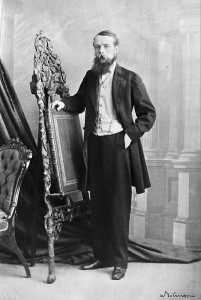
1.2.3 Postindustrial Societies

Information societies, sometimes known as postindustrial or digital societies, are a recent development. Unlike industrial societies that are rooted in the production of material goods, information societies are based on the production of information and services.
Digital technology is the steam engine of information societies, and high tech companies such as Apple, Microsoft and RIM are its version of railroad and steel manufacturing corporations. Since the economy of information societies is driven by knowledge and not material goods, power lies with those in charge of creating, storing, and distributing information. Members of a postindustrial society are likely to be employed as sellers of services — software programmers or business consultants, for example — instead of producers of goods. Social classes are divided by access to education, since without technical and communication skills, people in an information society lack the means for success.
1.2.4 Postnatural Society: The Anthropocene

Recent scientific and technological developments transform the relationship to nature to a such a degree that it is possible to talk about a new postnatural society. Advances in computing, genetics, nano-technology and quantum mechanics create the conditions for society in which the limits imposed by nature are overcome by technological interventions at the molecular level of life and matter. Donna Haraway (1991) describes the new “cyborg” reality that becomes possible when the capacities of the body and mind are enhanced by various prosthetic devices like artificial organs or body parts. When these artificial prosthetics do not simply replace defective anatomy but improve upon it, one can argue that the conditions of life have become postnatural. In his science fiction novel Holy Fire (1996), Bruce Sterling extrapolates from recent developments in medical knowledge to imagine a future epoch of posthumanity, i.e., a period in which the mortality that defined the human condition for millennia has effectively been eliminated through the technologies of life preservation.
Through genetic engineering, scientists have been able to create new life forms since the early 1970s. This research is fueled by the prospect of using genetic technologies to solve problems, like disease and aging, at the level of the DNA molecule that contains the “blueprint” of life. Food crops can be designed that are pest-resistant, drought-resistant or more productive. These technologies are therefore theoretically capable of solving environmentally imposed restrictions on our collective ability to feed the hungry. Similarly, nanotechnologies, which allow the physical properties of materials to be engineered at the atomic and subatomic level, pose the possibility of an infinitely manipulable universe. The futurologist Ray Kurzweil (2009) suggests that on the basis of nanotechnology “we’ll be able to create just about anything we need in the physical world from information files with very inexpensive input materials.” Others caution that the complexity of risks posed by the introduction of these molecular technologies into the environment makes their use decidedly dangerous and their consequences incalculable. This is a very postnatural dilemma; one that would not have occurred to people in earlier types of society.
What are the effects of postnatural technologies on the structure and forms of social life and society? At present, these technologies are extremely capital-intensive to develop, which suggests that they will have implications for social inequality — both within societies and globally. Wealthy nations and wealthy individuals will be the most likely beneficiaries. Moreover, as the development of postnatural technologies do not impact the basic structures of capitalism, for the forseeable future decisions on which avenues of research are to be pursued will be decided solely on the basis of profitable returns. Many competing questions concerning the global risks of the technologies and the ethics of their implementation are secondary to the profit motives of the corporations that own the knowledge.
In terms of the emergent life technologies like genetic engineering or micro-biochemical research, Nikolas Rose (2007) suggests that we are already experiencing five distinct lines of social transformation:
- The “molecularization” of our perspective on the human body, or life in general, implies that we now visualize the body and intervene in its processes at the molecular level. We are “no longer constrained by the normativity of a given order.” From growing skin in a petri dish to the repurposing of viruses, the body can be reconstructed in new, as yet unknown forms because of the pliability of life at the molecular level.
- The technologies shift our attention to the optimization of the body’s capacities rather than simply curing illness. It becomes possible to address our risk and susceptibility to future illnesses or aging processes, just as it becomes feasible to enhance the body’s existing capacities (e.g., strength, cognitive ability, beauty, etc.).
- The relationship between bodies and political life changes to create new forms of biological citizenship. We increasingly construct our identities according to the specific genetic markers that define us, (e.g., “we are the people with Leber’s Amaurosis”), and on this basis advocate for policy changes, accommodations, resources, and research funding, etc.
- The complexity of the knowledge in this field increasingly forces us to submit ourselves to the authority of the new somatic specialists and authorities, from neurologists to genetics counselors.
- As the flows of capital investment in biotechnology and biomedicine shift towards the creation of a new “bioeconomy,” the fundamental processes of life are turned into potential sources of profit and “biovalue.”
Some have described the postnatural period that we are currently living in as the Anthropocene. The anthropocene is defined as the geological epoch following the Pleistocene and Holocene in which human activities have significantly impacted the global ecosystem (Crutzen and Stoermer, 2000). Climate change is the primary example of anthropocenic effect, but it includes a number of other well-known examples from soil erosion and species extinction to the acidification of the oceans. Of course this impact began at least as early as the 19th century with the effects on the environment caused by the industrial revolution. Arguably, however, it is the recently established knowledge and scientific evidence of these effects which constitutes the current era as the anthropocene. In the anthropocene we become aware of the global nature of the catastrophic risks that human activities pose to the environment. It is also this knowledge that enables the possibility of institutional, economic, and political change to address these issues. Current developments like the use of cap and trade or carbon pricing to factor in the cost of the environmental impact into economic calculations, the shift to “green” technologies like solar and wind power, or even curbside recycling have both global implications and direct repercussions for the organization of daily life.
1.3 Why Study Sociology?
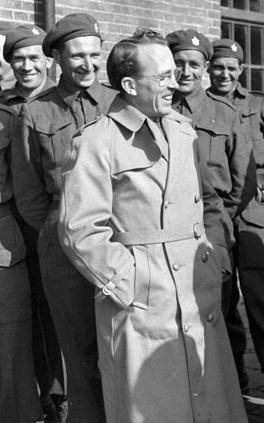
When Bernard Blishen picked up the phone one day in 1961, he was surprised to hear Chief Justice Emmett Hall on the other end of the line asking him to be the research director for the newly established Royal Commission on Health Services. Publically funded health care had been introduced for the first time in Canada that year, by a socialist Co-operative Commonwealth Federation (CCF) government in Saskatchewan, amid bitter controversy. Doctors in Saskatchewan went on strike and private health care insurers mounted an expensive anti-public health care campaign. Because it was a Conservative government commission, appointed by Prime Minister John Diefenbaker, Blishen’s colleagues advised him that it was going to be a whitewash document to defend the interests of private medical care. However, Blishen took on the project as a challenge, and when the commission’s report was published it advocated that the Saskatchewan plan be adopted nationally (Vaughan, 2004).
Blishen went on to work in the field of medical sociology and also created a widely-used index to measure socioeconomic status known as the Blishen scale. He received the Order of Canada in 2011 in recognition of his contributions to the creation of public health care in Canada.
Since it was first founded, many people interested in sociology have been driven by the scholarly desire to contribute knowledge to this field, while others have seen it as a way not only to study society, but also to improve it. Besides the creation of public health care in Canada, sociology has played a crucial role in many important social reforms such as equal opportunity for women in the workplace, improved treatment for individuals with mental and learning disabilities, increased recognition and accommodation for people from different ethnic backgrounds, the creation of hate crime legislation, the right of Indigenous populations to preserve their land and culture, and prison system reforms.
The prominent sociologist Peter L. Berger (b. 1929), in his 1963 book Invitation to Sociology: A Humanistic Perspective, describes a sociologist as “someone concerned with understanding society in a disciplined way.” He asserts that sociologists have a natural interest in the monumental moments of people’s lives, as well as a fascination with banal, everyday occurrences. Berger also describes the “aha” moment when a sociological theory becomes applicable and understood:
[T]here is a deceptive simplicity and obviousness about some sociological investigations. One reads them, nods at the familiar scene, remarks that one has heard all this before and don’t people have better things to do than to waste their time on truisms — until one is suddenly brought up against an insight that radically questions everything one had previously assumed about this familiar scene. This is the point at which one begins to sense the excitement of sociology (Berger, 1963).
Sociology can be exciting because it teaches people ways to recognize how they fit into the world and how others perceive them. Looking at themselves and society from a sociological perspective helps people see where they connect to different groups based on the many different ways they classify themselves and how society classifies them in turn. It raises awareness of how those classifications — such as economic and status levels, education, ethnicity, or sexual orientation — affect perceptions.
Sociology teaches people not to accept easy explanations. It teaches them a way to organize their thinking so that they can ask better questions and formulate better answers. It makes people more aware that there are many different kinds of people in the world who do not necessarily think the way they do. It increases their willingness and ability to try to see the world from other people’s perspectives. This prepares them to live and work in an increasingly diverse and integrated world.
1.3.1 Sociology in the Workplace
Employers continue to seek people with what are called “transferable skills.” This means that they want to hire people whose knowledge and education can be applied in a variety of settings and whose skills will contribute to various tasks. Studying sociology can provide people with this wide knowledge and a skill set that can contribute to many workplaces, including:
- An understanding of social systems and large bureaucracies;
- The ability to devise and carry out research projects to assess whether a program or policy is working;
- The ability to collect, read, and analyze statistical information from polls or surveys;
- The ability to recognize important differences in people’s social, cultural, and economic backgrounds;
- Skill in preparing reports and communicating complex ideas; and
- The capacity for critical thinking about social issues and problems that confront modern society (Department of Sociology, University of Alabama).
Sociology prepares people for a wide variety of careers. Besides actually conducting social research or training others in the field, people who graduate from college with a degree in sociology are hired by government agencies, nongovernmental organizations, and corporations in fields such as social services, counseling (e.g., family planning, career, substance abuse), designing and evaluating social policies and programs, health services, polling and independent research, market research, and human resources management. Even a small amount of training in sociology can be an asset in careers like sales, public relations, journalism, teaching, law, and criminal justice.
Key Terms and Concepts
Society: a group of people whose members interact, reside in a definable area, and share a culture.
Culture: forms of cooperation and the common habits, behaviours, and ways of life of a group.
Ethnosphere: the entirety of all cultures’ “ways of thinking, ways of being, and ways of orienting oneself on the Earth” (Davis, 2007).
Sociology: the systematic study of society and social interaction.
Sociological Imagination: how individuals understand their own and others’ lives in relation to history and social structure.
Social Structures: general patterns that persist through time and become habitual or routinized at micro-levels of interaction, or institutionalized at macro or global levels of interaction.
Reification: the way in which abstract concepts, complex processes, or mutable social relationships come to be thought of as “things.”
Figuration: the process of simultaneously analyzing the behaviour of individuals and the society that shapes that behaviour.
The Law of Three Stages: a sociological theory which holds that all human societies and all forms of human knowledge evolve through three distinct stages from primitive to advanced: the theological, the metaphysical, and the positive.
Historical Materialist: an approach to understanding society that explains both social change and the development of human ideas in terms of underlying changes in the mode of production.
Usufruct: the distribution of resources according to need.
Social class: a group that has a distinct relationship to the means of production.
Anthroposcene: a proposed geological epoch dating from the commencement of significant human impact on Earth’s geology and ecosystems.
1.4 References
Berger, P. (1967). The sacred canopy: Elements of a theory of religion. New York, NY: Doubleday.
Durkheim, Émile. (1951). Suicide: A study in sociology. New York: Free Press. (original work published 1897)
Haraway, Donna. (1991). A cyborg manifesto: Science, technology and socialist-feminism in the late 20th century. Simians, cyborgs and women: The reinvention of nature (Ch. 8). London: Free Association
Kurzweil, Ray. (2009). Ray Kurzweil on the future of nanotechnology. Big think. Retrieved, Oct. 4, 2015, from http://bigthink.com/videos/ray-kurzweil-on-the-future-of-nanotechnology
Lee, Richard. (1978). Politics, sexual and nonsexual, in an egalitarian society. Social science information, 17.
Mills, C. Wright. (2000). The sociological imagination. (40th ed.). New York: Oxford University Press. (original work published 1959)
Pollan, Michael. (2006). The omnivore’s dilemma: A natural history of four meals. New York: Penguin Press.
Rose, N. (2007). The politics of life itself: Biomedicine, power, and subjectivity in the twenty-first century. Princeton, NJ: Princeton University Press.
Simmel, Georg. (1971). The problem of sociology. In D. Levine (Ed.), Georg Simmel: On individuality and social forms (pp. 23–27). Chicago: University of Chicago Press. (original work published 1908)
Statistics Canada. (2013). Overweight and obese adults (self-reported), 2012. Statistics Canada health fact sheets. Catalogue 82-625-XWE. Retrieved February 24, 2014, from http://www.statcan.gc.ca/pub/82-625-x/2013001/article/11840-eng.htm
Ulrich Beck (2000)

